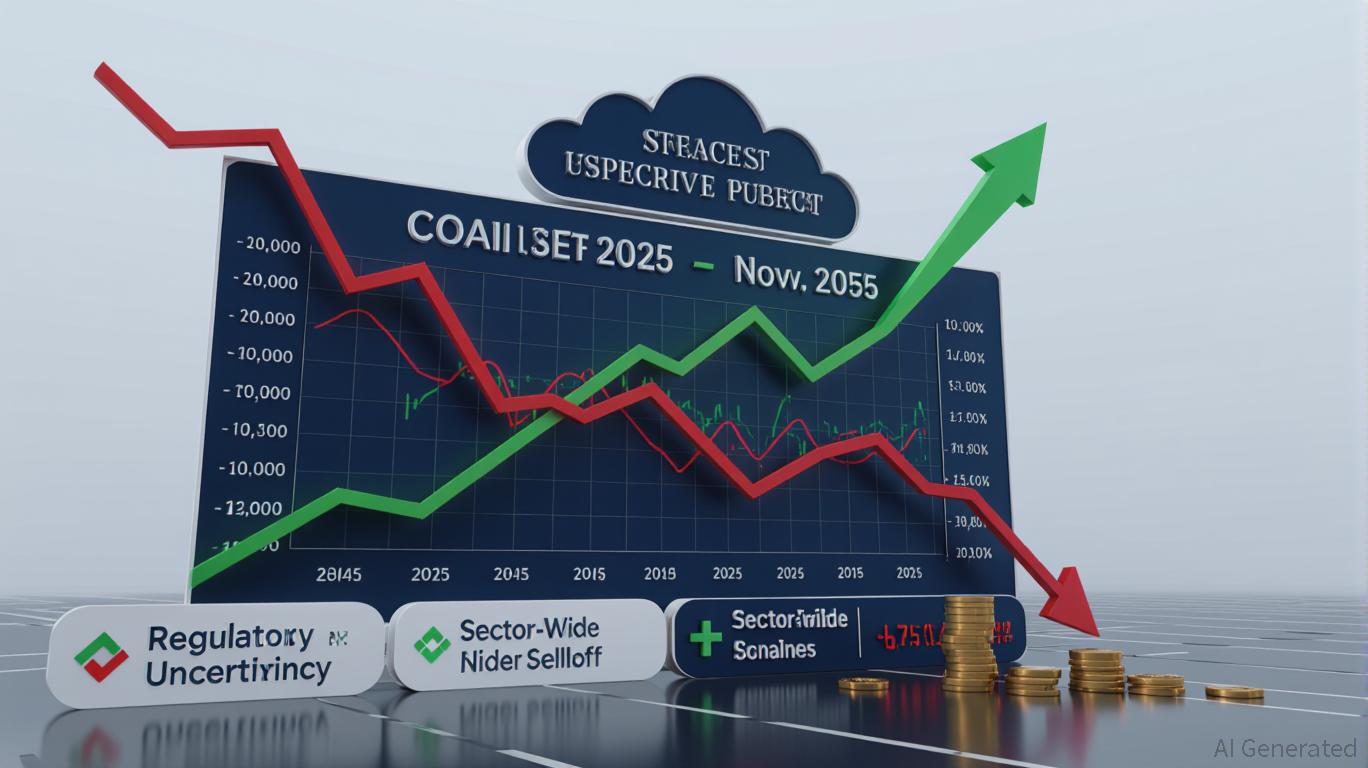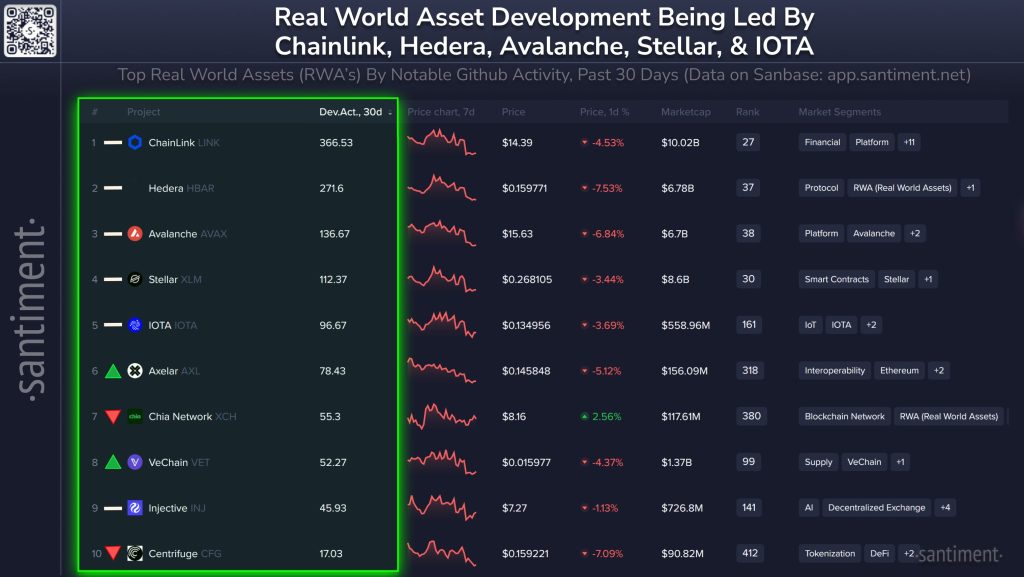COAI's Sudden Price Decline: Managing Immediate Fluctuations and Sustained Strength
- COAI Index fell 54% by November 2025 due to C3.ai's $116.8M loss, lawsuits, and regulatory uncertainty from the CLARITY Act. - Short-term selloffs were amplified by sector-wide risk aversion, though Binance's smart money account profited $3.125M from COAI trades. - Long-term resilience stems from 50+ corporate partnerships advancing AI adoption and indirect benefits from rising AI R&D investments in biotech . - Investors must balance regulatory risks with COAI's ecosystem strength, as C3.ai's struggles c
Short-Term Catalysts: Sentiment and Structural Shifts Collide
COAI Index’s 54% decline since early 2025 intensified in November, triggered by several overlapping events. Central to the downturn was C3.ai’s Q1 2025 net loss of $116.8 million, alongside a class-action lawsuit and executive turnover, as highlighted by
Market dynamics further fueled the decline. Despite the prevailing negative sentiment, Binance’s leading smart money account took a contrarian approach, earning $3.125 million in profits from COAI trades with an 89% success rate, as noted by
. This indicates that while the broader market turned bearish, some savvy investors identified opportunities amid the downturn.
Long-Term Fundamentals: Building Strength Through Partnerships and Innovation
Despite recent volatility, COAI’s long-term outlook is underpinned by its strategic alliances and commitment to community-led innovation. The index has established partnerships with more than 50 companies to promote AI adoption and discovery, fostering a strong ecosystem for enterprise AI transformation, as reported by
. These collaborations, which span sectors such as healthcare and logistics, position COAI as a connector between established industries and emerging AI technologies.Although direct figures on COAI’s research and development spending are limited in the available sources, the broader AI industry’s innovation momentum is promising. For example, biotech companies like Artelo Biosciences and CalciMedica increased their R&D expenditures to $1.3 million and $3.9 million, respectively, in Q3 2025, as mentioned by
. While not directly related to COAI, these developments highlight a global drive for AI-powered research, which could indirectly support COAI’s ecosystem.Strategic Considerations: Managing Risk and Navigating Regulation
Investors need to weigh COAI’s long-term promise against immediate challenges. The regulatory uncertainty brought by the CLARITY Act remains a significant unknown, as lawmakers try to balance oversight with fostering innovation. Spreading investments across different AI segments—such as hardware, data management, and ethical AI—may help cushion against shocks specific to one area.
Additionally, COAI’s dependence on the C3.ai ecosystem creates a concentration risk. While C3.ai’s recent difficulties have negatively impacted the index, the resulting leadership changes and legal issues could also open the door for restructuring and a renewed focus on core strengths.
Conclusion: Cautious Optimism Amid Uncertainty
COAI’s sharp decline in November 2025 reflects a market wrestling with sector-specific challenges and regulatory ambiguity. Nevertheless, its foundation—built on strategic partnerships and collaborative innovation—points to underlying resilience. For investors, the challenge is to separate short-lived market swings from lasting value. While prudence is necessary, COAI’s network seems prepared to withstand current pressures and potentially thrive as AI adoption continues to grow.
Disclaimer: The content of this article solely reflects the author's opinion and does not represent the platform in any capacity. This article is not intended to serve as a reference for making investment decisions.
You may also like
Zcash Latest Updates: Ongoing ZEC Shortfall and Popcat Incident Put Pressure on Hyperliquid's Liquidity
- Hyperliquid's ZEC short position, $28M notional, has seen losses shrink to $9.5M as whale adds to bets during price rallies. - Same whale holds $27M ETH short with $5.5M unrealized profit, showcasing cross-asset hedging through leveraged positions. - Popcat (POPCAT) trading loss of $4.9M triggered by meme coin collapse forced manual liquidation, damaging Hyperliquid's reputation. - HYPE token's futures open interest dropped $500M since October, reflecting waning confidence amid infrastructure concerns an

SFC Head's Prolonged Tenure Strengthens Hong Kong's Fintech Overhaul with Lion Rock Spirit
- Hong Kong's SFC extended CEO Julia Leung's term until 2027 to ensure continuity in fintech reforms and digital asset regulation. - Leung's leadership aligns with Hong Kong's 3.8% Q3 GDP growth and revised 3.2% 2025 forecast, reinforcing its financial hub status. - Local startup StarFive's Lion Rock RISC-V chip, adopted by Huawei, highlights Hong Kong's push for tech-driven economic diversification. - SFC faces balancing act as Uber Hong Kong advocates flexible driver quotas amid evolving ride-hailing reg

Zcash Halving: Exploring the Impact of Supply Dynamics and Market Sentiment on the Altcoin Ecosystem
- Zcash (ZEC) underwent its 2025 halving, cutting block rewards by 50% to 1.5625 ZEC, triggering a 20% price surge and renewed focus on scarcity-driven value. - The event reduced annual inflation to 4%, boosted institutional adoption (e.g., $137M Grayscale Trust), and highlighted Zcash's privacy-driven utility with 27–28% shielded transactions. - ZEC outperformed Bitcoin in Q4 2025, peaking at $712, as institutional demand (e.g., $50M Cypherpunk purchase) and privacy tools like Zashi wallet drove adoption

RWA Tokens Set for a Major Breakout? Santiment Data Shows Developer Momentum Surging
